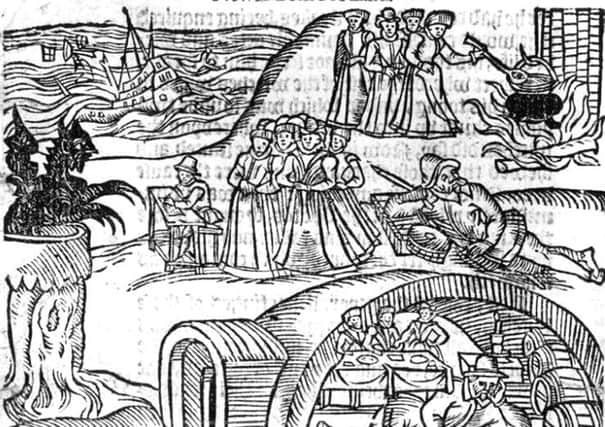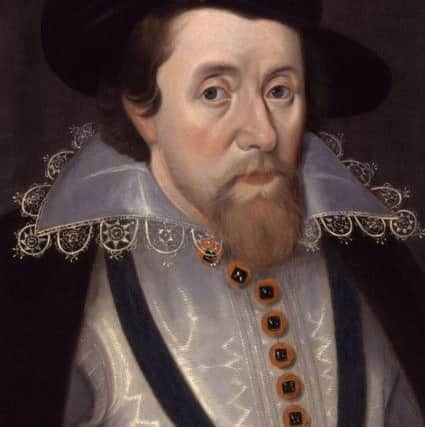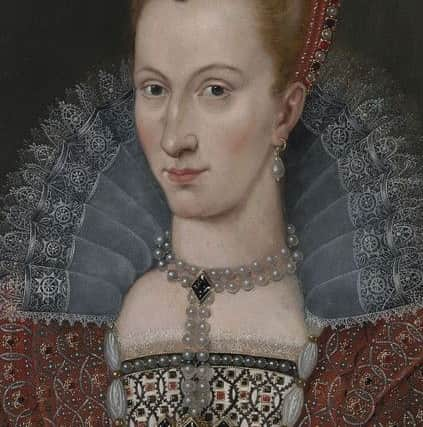The brutal witch hunts of a love struck Scottish king
This article contains affiliate links. We may earn a small commission on items purchased through this article, but that does not affect our editorial judgement.


That rumour ended in one of the most brutal witch hunts in the country’s history, driven by a love, James VI determined to root out the superstitious forces said to have put his life and that of his new bride - Anne of Denmark - at risk.
Anne of Denmark set sail for Scotland in 1589 to start married life with James VI but did not appear in Edinburgh as planned.
Advertisement
Hide AdAdvertisement
Hide AdThe alarm was raised when a member of the fleet docked in Leith, separated from the group by a storm, to warn that the Queen’s life may be in danger.


James VI was said to be so alarmed that he called for public prayers and fasting while he holed up in the home of his friend, Lord Seton, whose residence overlooked the Firth of Forth, to wait for news.
Unbeknownst to the King, his wife had been forced back to the coast of Norway several times due to the rough conditions, with the Queen eventually returning to Denmark by land for refuge.
James VI learned around a month later that his wife was safe and decided to embark on his own voyage to bring his wife to Scotland.


After being united, the couple stayed on in Denmark for the winter as the weather continued to rage in the North Sea - then called the German Ocean.
During his time in Copenhagen, the king was to learn that two women were executed at Kronborg after being found guilty of raising storms to delay the Queen’s journey.
James VI, who became so fascinated with ‘witches’ he wrote a book on the subject and began to investigate the possibility that a coven in Scotland was working alongside counterparts in Denmark to try and kill the new Royal couple as they tried to return to Scotland,


Advertisement
Hide AdAdvertisement
Hide AdNews came to the king that his old adversary, Francis, 5th Earl of Bothwell, had kept an active witch coven in East Lothian under his influence.
In December 1590, Scottish and Danish officials met at sea in the Firth of Forth to discuss the issue with talks concluding that there had been witches in both Denmark and Scotland who had been working in cahoots to destroy the newlyweds.
According to accounts, trials were raised against four further women in Denmark thought to be involved with the plot.
In Scotland, proceedings were raised against the so-called North Berwick witches, who congregated in St Andrews Auld Kirk in the town, and their accomplices.


It was the first large scale prosecution of its type in Scotland and those arrested and put on trial included Dame Euphemia Macalzean, Agnes Sampson, a herbalist of Nether Keith; John Cunningham of Prestonpans, a schoolmaster and secretary to Lord Bothwell; Geilie Duncan of Tranent and Barbara Napier and Ritchie Graham both of Edinburgh.
It is said that James VI personally interrogated a number of suspects.
Agnes Sampson was tortured at Edinburgh Tolbooth where she was pinned to the wall using a witch’s bridle, an iron muzzle that clamps the head, and eventually she confessed to 53 charges against her.
Advertisement
Hide AdAdvertisement
Hide AdDuring her confession she claimed she attached parts of a corpse to a cat, sailed to sea in a sieve, then put the cat into the sea to create a storm to shipwreck the king.
John Cunningham - who used an alias Dr John Fian, was burnt at the stake at Edinburgh’s Castlehill after being tortured for several days.
Dame Euphemia Macalzean, daughter of Lord Cliftonhall, was also burned at the stake in the shadows of Edinburgh Castle.
They were among at least 50 people executed for endangering the life of the King with the episode to lead to witch hunts lasting longer in East Lothian than almost anywhere else.
According to reports, 73 people were tried for witchcraft in Dunbar presbytery between between 1593 and 1705 but this is believed to be a modest indication as to the levels of persecution, given gaps in recorded evidence of one of Scotland’s darkest chapters.
Meanwile, James VI published Daemonologie in 1597 following the Berwick Witch Trials, with the proceedings charted in the third section of the book
In it, he attempt to “resolve the doubting...both that such assaults of Satan are most certainly practiced and that the instrument therefore merits most severely to be punished.”
The book went on to be a major influence Shakespeare in his writing of Macbeth, it is claimed.
DOWNLOAD THE SCOTSMAN APP ON ITUNES OR GOOGLE PLAY
